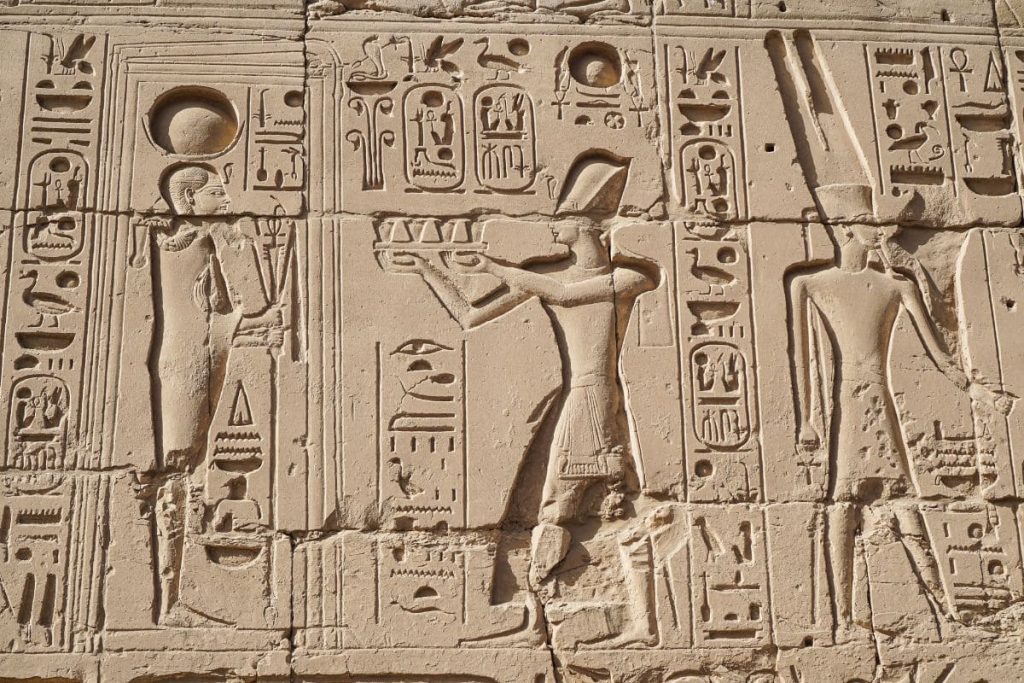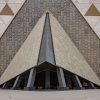Introduction
Ever wondered who the ancient Egyptians turned to for protection, guidance, or wisdom? The Egyptian Gods were not just figures of worship but integral parts of daily life, woven into the very fabric of their society. Imagine waking up each day, knowing that powerful deities were watching over you, influencing everything from the rising sun to the afterlife. Egyptian mythology is a rich tapestry of gods and goddesses, each with unique roles and stories, shaping one of the most fascinating ancient cultures in history. Join me as we embark on a journey through this pantheon of divine beings, discovering their characteristics, tales, and the enduring legacy they left behind.
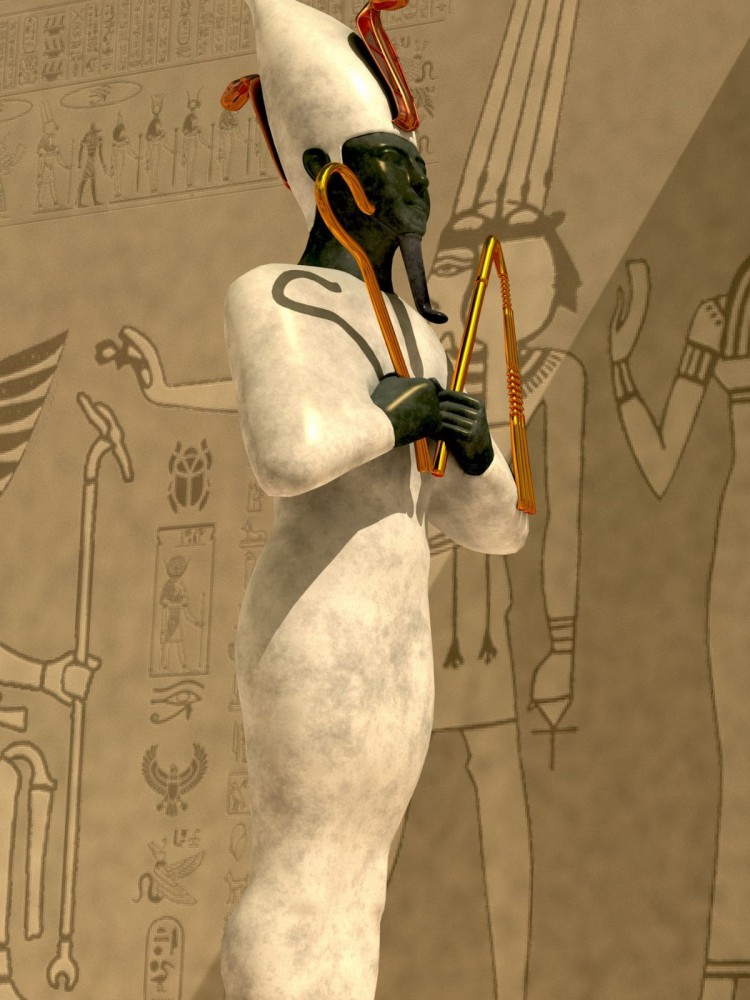
1. Origins and Significance of Egyptian Mythology
Egyptian mythology is the cornerstone of ancient Egyptian culture, influencing everything from governance to daily chores. It all began with creation myths that told of the emergence of gods from the chaotic waters of Nun. These stories weren’t just bedtime tales; they were the foundation of the Egyptians’ understanding of the world and their place in it.
In ancient Egypt, mythology was more than a collection of stories; it was a guide to life and death. The gods were believed to control natural and social order, and their myths explained the universe’s workings. For instance, the sun god Ra’s daily journey across the sky symbolized life’s perpetual cycle and the afterlife’s promise. Egyptians looked to these myths for moral guidance, understanding of the cosmos, and assurance of their souls’ destiny after death.
Creation myths often started with the concept of a primordial chaos from which the first god, Atum, emerged. Atum’s self-creation led to the birth of other gods who would govern the heavens, earth, and the underworld. These early myths established a divine hierarchy that mirrored and justified the pharaoh’s earthly rule, as he was seen as the gods’ representative on earth.
The significance of mythology extended beyond religious practices to art, architecture, and even politics. Temples were built to honor the gods, and grand ceremonies were held to ensure their favor. Pharaohs commissioned monumental works to depict their divine connections, reinforcing their power and legitimacy.
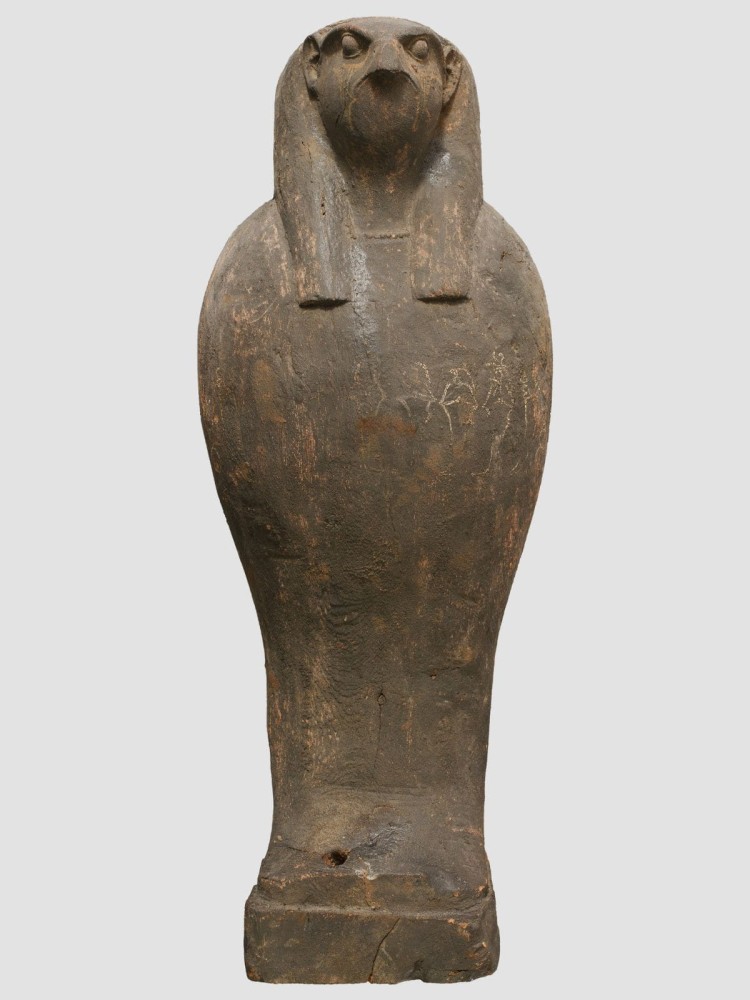
2. Major Egyptian Gods and Their Roles
Ancient Egyptian mythology boasts a pantheon of gods, each with distinct attributes and responsibilities. Let’s explore some of the most significant deities who played pivotal roles in the lives of ancient Egyptians
Ra: The Sun God
Ra, the mighty sun god, was revered as the creator of the world. Every day, he embarked on a perilous journey across the sky, bringing light and life to the world. As the sun set, Ra traveled through the underworld, battling chaos before being reborn at dawn. This daily cycle symbolized renewal and the eternal struggle between order and chaos.
Ra was depicted with the head of a falcon crowned with a sun disk. His worship was widespread, with temples dedicated to him, such as the famous Sun Temple at Heliopolis. Ra’s significance extended beyond the physical world; he was also considered the father of the gods, giving life to other deities and ensuring the universe’s stability.
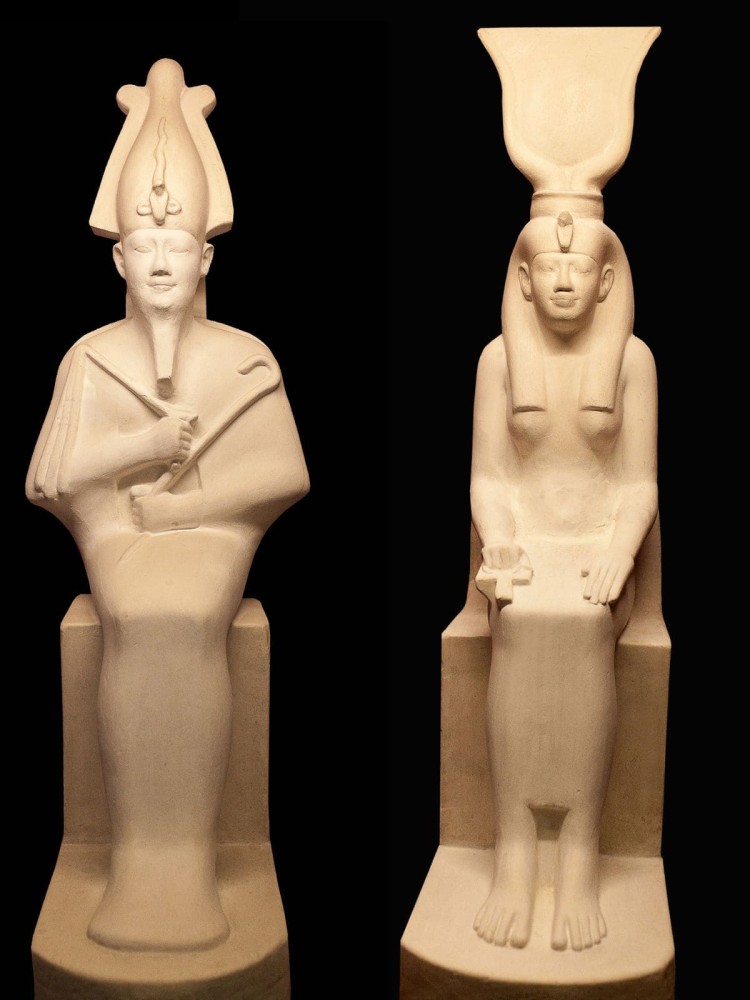
Osiris: God of the Afterlife and Resurrection
Osiris, the god of the afterlife, presided over the realm of the dead. His story is one of betrayal, death, and resurrection. Murdered by his brother Set, Osiris was brought back to life by his devoted wife, Isis. This resurrection made him the eternal king of the underworld, overseeing the judgment of souls and the promise of rebirth. His tale underscored themes of justice and the hope for eternal life.
Osiris was often depicted as a green-skinned deity, symbolizing rebirth, with a pharaoh’s beard and wrapped like a mummy. He held the crook and flail, symbols of kingship. His association with the Nile’s fertility and the agricultural cycle reinforced his role as a life-giving force.
Isis: Goddess of Magic and Motherhood
Isis, a powerful goddess of magic and motherhood, was revered for her protective and healing powers. She was the ultimate mother figure, nurturing and defending her son Horus against Set. Isis’s magical prowess and her role as a devoted wife and mother made her one of the most beloved deities in Egyptian mythology.
Depicted with a throne-shaped headdress or holding her son Horus, Isis was a symbol of maternal care and magic. Her worship spread beyond Egypt, influencing other cultures and religions. Festivals and rituals celebrated her protective nature, ensuring the well-being of her followers

Horus: God of the Sky and Kingship
Horus, the falcon-headed god, symbolized kingship and the sky. He was the son of Osiris and Isis, destined to avenge his father’s death and restore order. Pharaohs were considered the living embodiment of Horus, emphasizing their divine right to rule. The Eye of Horus, a powerful symbol of protection and royal power, is still recognized today.
Horus’s battles with Set for the throne of Egypt represented the struggle between order and chaos. His victory established him as a symbol of rightful leadership and protection. Statues and reliefs often depict Horus with a falcon head, underscoring his divine authority.
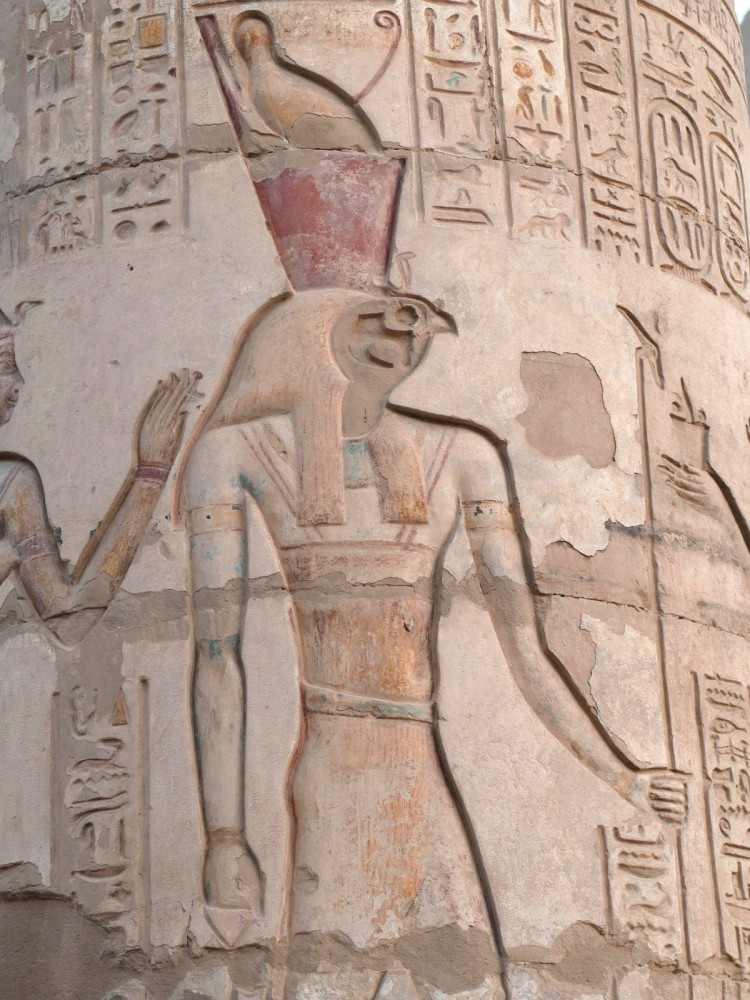
Anubis: God of Mummification and the Afterlife
Anubis, the jackal-headed god, was the guardian of the dead and the afterlife. He presided over mummification and the weighing of the heart ceremony, where souls were judged. Anubis ensured that the deceased were properly prepared for their journey to the afterlife, guiding them to their final destination.
Anubis’s role in the embalming process made him a key figure in funerary practices. He was often depicted as a black jackal or a man with a jackal’s head, symbolizing his connection to death and protection. His presence ensured that the dead were safe and honored.

Thoth: God of Wisdom and Writing
Thoth, the ibis-headed god, was the divine scribe, master of knowledge and writing. He played a crucial role in maintaining cosmic balance and was often depicted recording the outcomes of the judgment of souls. Thoth’s contributions to knowledge, science, and writing were invaluable, making him a key figure in Egyptian mythology.
Thoth was depicted as an ibis or a baboon, symbolizing his intelligence and wisdom. He invented writing and was associated with the moon, timekeeping, and mathematics. His role as a mediator in disputes and his record-keeping ensured justice and order in the universe.
3. Mythological Stories and Their Lessons
Egyptian mythology is rich with stories that convey profound lessons about life, morality, and the human condition. These tales were not only entertaining but also served as allegories for complex philosophical and ethical concepts.
The Story of Osiris and Isis: Themes of Betrayal, Resurrection, and Justice
The tale of Osiris, Isis, and Set is one of the most compelling in Egyptian mythology. Set, jealous of his brother Osiris’s kingship, tricks and murders him, scattering his body parts across Egypt. Isis, with her magical abilities and unwavering devotion, gathers Osiris’s pieces and resurrects him, allowing him to rule the underworld.
This story highlights themes of betrayal, the power of love and loyalty, and the triumph of life over death. It also underscores the concept of ma’at (order and justice), as Osiris’s resurrection and Set’s defeat restore balance to the world. The tale’s emotional depth and moral lessons resonated deeply with the ancient Egyptians, reflecting their values and beliefs about justice, family, and the afterlife.
The Battles Between Horus and Set: Themes of Good vs. Evil
The ongoing conflict between Horus and Set symbolizes the eternal struggle between good and evil. After avenging his father, Horus battles Set for the throne of Egypt. These epic clashes represent the fight to maintain order against chaos.
Each encounter between Horus and Set teaches lessons about perseverance, justice, and the resilience required to overcome adversity. The resolution of their conflict, with Horus’s eventual victory, reinforces the idea that good ultimately prevails. These stories were not just entertainment; they served as moral guides for the people, instilling values of courage, righteousness, and the importance of maintaining cosmic order.
The Journey of Ra Through the Underworld: Themes of Rebirth and Renewal
Every night, Ra descends into the underworld, facing numerous challenges and enemies before emerging victorious at dawn. This journey symbolizes the cycle of life, death, and rebirth, reflecting the agricultural and seasonal cycles vital to Egyptian society.
Ra’s nightly battles underscore the importance of renewal and the continuous effort required to maintain balance in the universe. This myth also reassures believers of the sun’s return and the promise of a new day, providing hope and stability. The depiction of Ra’s journey through the underworld also illustrated the Egyptians’ understanding of the afterlife and the challenges the soul might face on its journey to eternal peace.
4. Depiction and Worship of Gods
The gods of ancient Egypt were not only worshipped but also vividly depicted in art and ritual. Their representations and the rituals performed in their honor reveal much about the values and beliefs of ancient Egyptians.
Iconography and Symbols Associated with Each God
Each god had distinct symbols and iconography that made them easily recognizable. Ra was depicted with a sun disk, Osiris with a green face and mummy wrappings, and Isis with a throne-shaped crown. These visual cues conveyed the gods’ attributes and stories.
Symbols like the ankh (symbol of life), the Eye of Horus (protection), and the Djed pillar (stability) were commonly associated with the gods. These symbols appeared in tombs, temples, and everyday objects, reflecting their pervasive influence. The consistent use of these symbols across various forms of art and architecture highlights their importance in religious and daily life.
Rituals, Offerings, and Festivals in Honor of the Gods
Worship in ancient Egypt involved elaborate rituals, offerings, and festivals. Daily temple rituals included prayers, hymns, and the presentation of food and drink to the gods’ statues. Festivals celebrated significant mythological events and agricultural cycles.
The Opet Festival, for example, celebrated the rejuvenation of the pharaoh and the god Amun. During these festivals, statues of the gods were paraded through the streets, allowing the public to participate in the divine presence. These rituals and festivals were not just religious acts; they were social events that reinforced community bonds and cultural identity.
The Role of Priests and Temples in Maintaining Religious Practices
Priests played a crucial role in maintaining religious practices and serving the gods. They performed daily rituals, maintained temples, and ensured the gods’ favor. Temples were not just places of worship but also centers of economic and political power.
Temples like Karnak and Luxor were grand architectural feats dedicated to the gods, reflecting their importance. The priesthood controlled vast resources and land, highlighting the intertwined nature of religion and governance in ancient Egypt. The role of priests extended beyond religious duties; they were also scholars, healers, and advisors to the pharaoh, emphasizing the holistic nature of their influence.
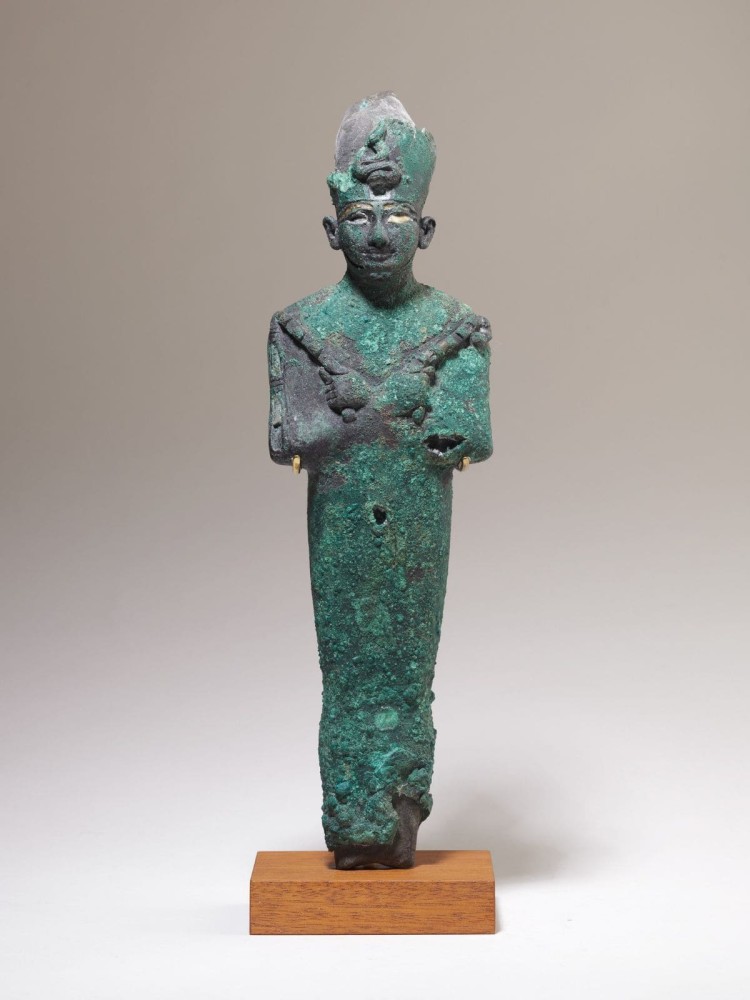
Conclusion
The mythology of ancient Egypt offers a fascinating glimpse into a world where gods walked among men, and every aspect of life was imbued with divine significance. From creation myths that explain the origins of the world to the complex tales of gods like Osiris, Isis, and Horus, these stories provided ancient Egyptians with a framework for understanding their universe.
In summary, Egyptian mythology was not merely a collection of tales but a vital aspect of daily life, governance, and spirituality. The major gods and their roles reflect the values and beliefs of this ancient civilization, offering lessons that resonate even today. The vivid depictions and elaborate worship practices underscore the deep reverence the Egyptians had for their deities, whose legacy continues to captivate us.
For those inspired to delve deeper, there are countless resources available—books, documentaries, and even the opportunity to explore these ancient sites firsthand. Whether you’re a history enthusiast, a spiritual seeker, or simply curious, the world of Egyptian mythology is a treasure trove waiting to be discovered.

